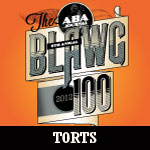FDA Convenes Expert Panel to Consider Food Dye-ADHD Link
 Last week, a Food and Drug Administration advisory panel composed of doctors, scientists, and consumer representatives spent two days reviewing evidence that purportedly shows a link between synthetic food colorings and ADHD, or hyperactivity, in kids. Artificial dyes are added to many familiar snack and junk foods – staples of the modern diet. This alleged link has been the subject of ongoing debate for decades, pitting the food industry against parents, public watchdog groups and academics who have demanded a closer look at food additives.
Last week, a Food and Drug Administration advisory panel composed of doctors, scientists, and consumer representatives spent two days reviewing evidence that purportedly shows a link between synthetic food colorings and ADHD, or hyperactivity, in kids. Artificial dyes are added to many familiar snack and junk foods – staples of the modern diet. This alleged link has been the subject of ongoing debate for decades, pitting the food industry against parents, public watchdog groups and academics who have demanded a closer look at food additives.
Interestingly, across the ocean, where this issue is already “old news,” the European Food Safety Authority has already mandated that foods with color additives contain warning labels for consumers. Here at least, additional regulation may be on the horizon, but not soon. One last thought: Perhaps it’s not the color additives that instigate the alleged behavioral problems, but the overall quality of the snack and junk foods, their sugar content, or even the lifestyle choices of the families that purchase said food in order to appease the sweet teeth of their children.














